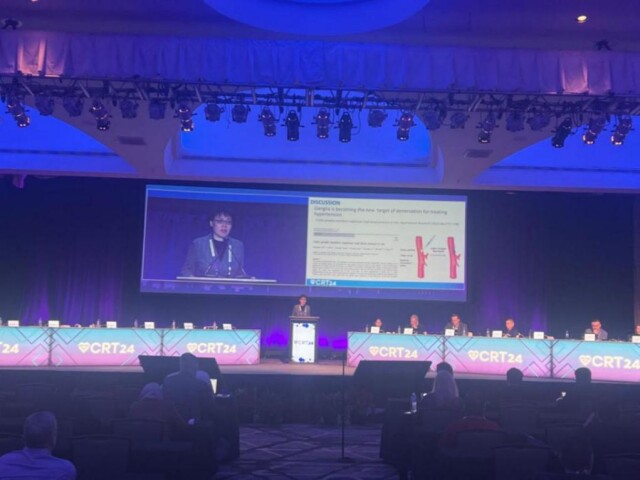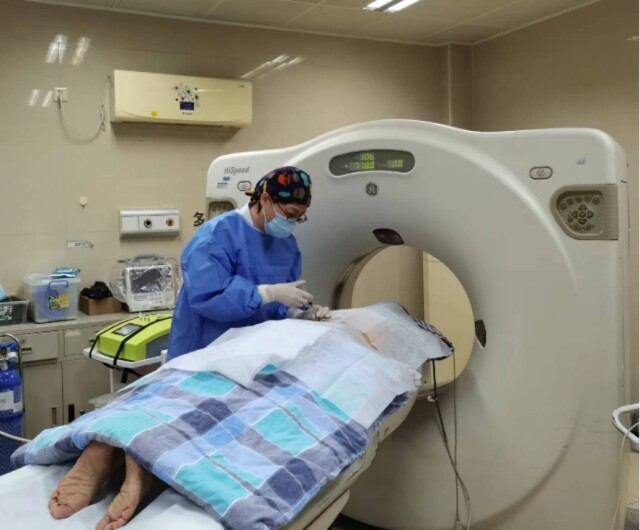Resistant hypertension, a condition of paramount importance due to its potential to precipitate end-organ damage, presents a formidable challenge in clinical practice. The complexity and protracted nature of administering antihypertensive medication often lead to patient non-compliance. CT-guided ozone-mediated lumbar-renal sympathetic denervation can offer patients more options to improve their treatment.
On March 12, Dr. Li Li, director of the Cardiovascular Center at Guangzhou Red Cross Hospital, was invited to present this new technology at Cardiovascular Research Technologies (CRT) 2024 in the US.
Out of a global selection of 39 innovative clincal trials featured at CRT 2024, Dr. Li’s study was the sole representative from China. This novel technology garnered international acclaim, with scholars lauding its promising prospects for clinical application.

(Photo provided to GDToday)
According to a comprehensive global analysis of trends in hypertension prevalence, detection, treatment and control, led by Imperial College London and WHO, the number of hypertensive adults aged 30-79 has increased from 650 million to 1.28 billion between 1990 and 2019. The analysis was published in The Lancet. Within these hypertensive population, a subset of patients exhibiting resistant hypertension has been identified.
Resistant hypertension refers to patients with high blood pressure who need to take 3 or more types of antihypertensive drugs but still do not meet the standard, or who need to take 4 or more antihypertensive drugs to meet the standard. It is crucial to find a safe and effective method to treat resistant hypertension due to the serious risk it poses for damage to end-organs.
The technology was initially conceptualized by Dr.Li and her colleagues in August 2022. Following a thorough review by the hospital's ethics committee, it was formally implemented for exploratory use in a single-arm clinical trial to assess its efficacy and safety.

(Photo provided to GDToday)
One year later, the results of the trial showed that nearly 50% of patients with resistant hypertension met the criteria for downgrading antihypertensive medication during the 12-week follow-up period after treatment, and the burden of post-treatment antihypertensive drugs was significantly reduced.
Based on the substantial reduction in antihypertensive drugs, post-treatment blood pressure was further reduced. To date, 51 patients have successfully received the procedure. No adverse event during or after treatment was observed.

(Photo provided to GDToday)
Dr. Li said that this technology was suitable for patients with resistant hypertension, including those who struggled to control the condition with medication and needed to take multiple drugs for other diseases, those who preferred to avoid excessive medication, and those who had difficulties in taking medication due to occupational factors.
Reporter | Hannah
Editor | Nan, Abby, James
















